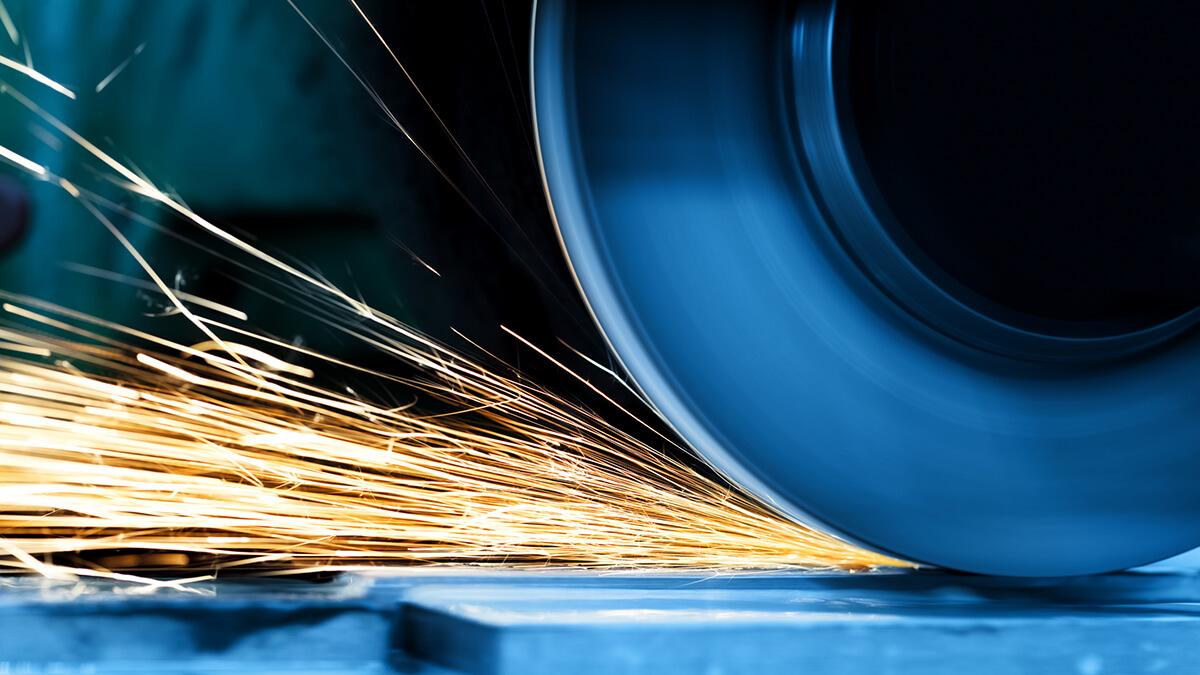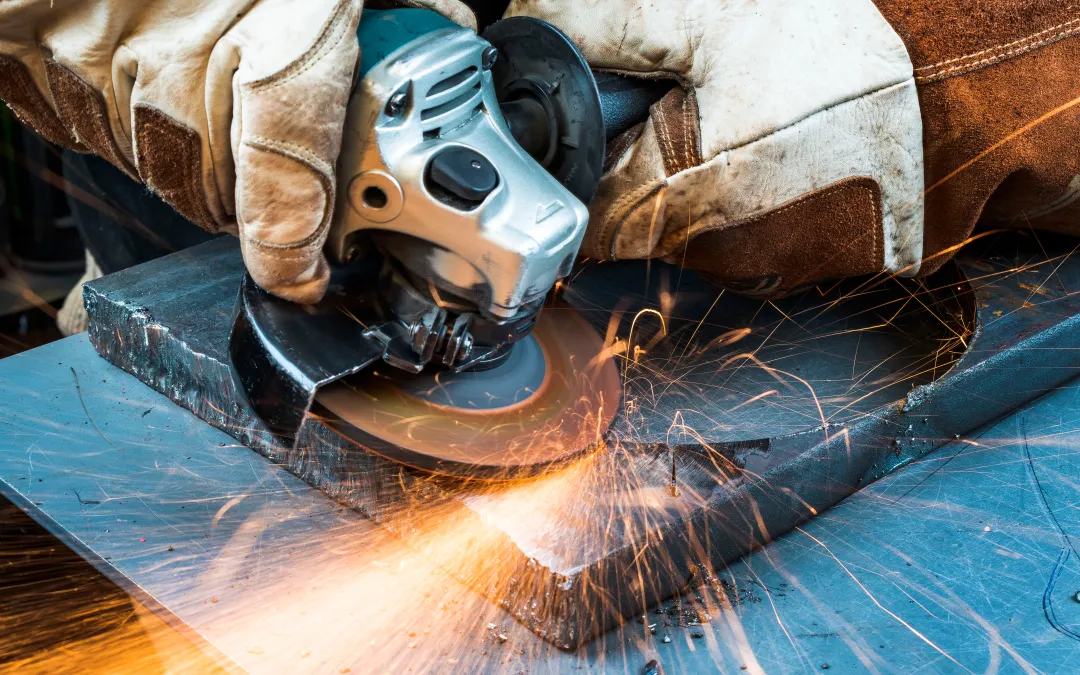For non-continuous trimming creep feed grinding, the calculation is simple. For continuous trimming, the calculation requires more steps, but in either case, the grinding cost can be managed by predicting the life of the 3x grinding wheel.
Progressive grinding is a form of precision grinding that has proven to be a major development in modern grinding technology. It has the potential to increase productivity and improve dimensional accuracy compared to conventional surface grinding. Peristaltic feed grinding is characterized by extensive removal of chips, typically at a depth of greater than 0.030 inches or 2 mm per pass. The purpose of this paper is to demonstrate the calculation of the life of the diamond grinding wheel in peristaltic feed grinding. Calculating wheel life is critical to predicting wheel usage and abrasive costs associated with the grinding process. In order to calculate the wheel life, you must know which dressing method is being used.
Two trimming methods of calculating grinding wheel can be used during the creep feed grinding process:
1. Non-continuous finishing in which an elevated or tabletop mounted diamond dresser intermittently inserts or laterally trims the model into the Binic grinding wheel. The amount of trimming is programmed in inches or millimeters.
2. Continuous dressing is conducive to mass production of materials that are difficult to machine or grind. Continuous dressing keeps the grinding wheel catalog sharp while maintaining a complex shape. Continuous Dressing Creep feed grinding uses an elevated diamond dressing roll to continuously trim during the grinding cycle. The amount of dressing is programmed in inches per millimeter per revolution.
Life calculation of grinding wheel in discontinuous (NCD) creep feed grinding
The life of the grinding wheel in the NCD creep feed is the available abrasive divided by the trim of the part. The following are some representative process data used to illustrate NCD creep feed grinding calculations:
- Maximum wheel diameter: 16 inches
- Minimum wheel diameter: 10.5 inches
- Available abrasives (radial): (16 – 10.5) / 2 = 2.75 inches
- Dressing amount per part (radial): 0.006 inches
- In this way, the wheel life is 2.75 / 0.006 = 458 parts per wheel.
Life calculation of grinding wheel in continuous (CD) peristaltic grinding
The wheel life in CD slow feed grinding is the available abrasive divided by the wheel wear for each grinding cycle.
Here’s how to calculate the wheel wear for each grinding cycle:
1.Wheel speed
Most peristaltic feeders are equipped with variable speed motors to ensure that the wheel maintains a constant speed per minute (sfpm) per minute throughout its life. Constant sfpm is critical to ensure optimal hub life. A reduced sfpm will result in fewer cutting edges being engaged during the unit grinding time, resulting in a higher load on each grain. This leads to an increase in the brittleness of the grain, which leads to premature wheel damage. As the wheels get smaller, sfpm remains constant, so the revolutions per minute (rpm) will increase. The dressing roller feeds the grinding wheel to a certain depth every revolution. Therefore, the amount of trimming increases as the wheel becomes smaller. Therefore, in order to calculate the average wheel life, we take into account the half of the wheel diameter:
Average rpm = sfpm /(π/ 12×DH)
Wheel diameter (DH) (inches) at half the wheel life = starting diameter. – ((starting diameter – minimum diameter) / 2)
2.Wheel travel
In CD slow feed grinding, the diamond roller begins to trim the grinding wheel after the grinding wheel begins to move. Therefore, the feed length of the wheel (commonly referred to as wheel travel) is taken into account when calculating the amount of trim per cycle. As the wheel gets smaller, the amount of clearance required to avoid collisions between the wheel and the part is reduced. Most machines will automatically take this into account. As the wheel becomes smaller, the starting position of the wheel is closer to the workpiece, which means that the wheel stroke is reduced. Therefore, the half-life wheel diameter is used to calculate the average wheel life.
Three entities move the wheel:
- Workpiece grinding length
- Half chord length (L) at full contact
- Safe length
In order to calculate the half-chord length at full contact, we need to know the depth of cut (DOC) of the workpiece and the radius (r) of the 3x grinding wheel.
We can use the basic geometric formula derived from the Pythagorean theorem to calculate the feed length (L) using the DOC, the radius of the diamond grinding wheel and the half chord length at full contact.
3.Wheel wear
The formula for calculating wheel wear is:
Wheel wear per grinding cycle = continuous dressing per wheel (CD) × rpm × wheel stroke / table speed
4.Wheel life
Now we can calculate the 3x grinding wheel life:
Wheel life = abrasive/grinding wear available per grinding cycle
Where…
Available Abrasive = (Maximum diameter of grinding wheel – Minimum diameter of grinding wheel) / 2
Example
Assume that these data represent the CD process:
- Maximum wheel diameter: 16 inches
- Minimum wheel diameter: 10.5 inches
- Wheel speed: 2,500 sfpm
- CD per revolution: 0.00002 inches
- Workbench speed: 8 ipm
- Grinding length: 2 inches
- Safe length: 0.1 inches
- Cut depth: 0.075 inches
Therefore:
DH = 16 –((16 – 10.5)/ 2)= 13.25 inches
r = 13.25 / 2 = 6.625 inches
x = 6.625 – 0 .075 = 6.55 inches
L =√(r ^ 2 – x ^ 2)= 0.99 inches
Total stroke = 2 + 0.99 + 0.1 = 3.09 inches
Rpm = (2,500 × 12) / (13.25 × π) = 721
Grinding wheel wear per grinding cycle = (0.00002 × 721 × 3.09) / 8 = 0.00557 inches
Available abrasive = (16 – 10.5) / 2 = 2.75 inches
Wheel life = 2.75 / 0.00557 = 493 parts / wheels
Conclusion
This article describes how to determine the life of a bsp diamond grinding wheel in a slow feed grinding operation. Calculating wheel life is critical to predicting wheel usage and abrasive costs associated with the grinding process. In order to calculate the wheel life, you must know which dressing method is being used. Wheel life is calculated by dividing the available abrasive by the wheel wear. Calculating wheel wear in a continuous cutting creep feed grinding operation is complicated. The dressing amount is programmed according to the revolution of the grinding wheel. The number of revolutions per cycle of the grinding wheel depends on the diameter of the grinding wheel, the speed of the grinding wheel (in sfpm), the length of the grinding, the depth of cut and the speed of the table.


